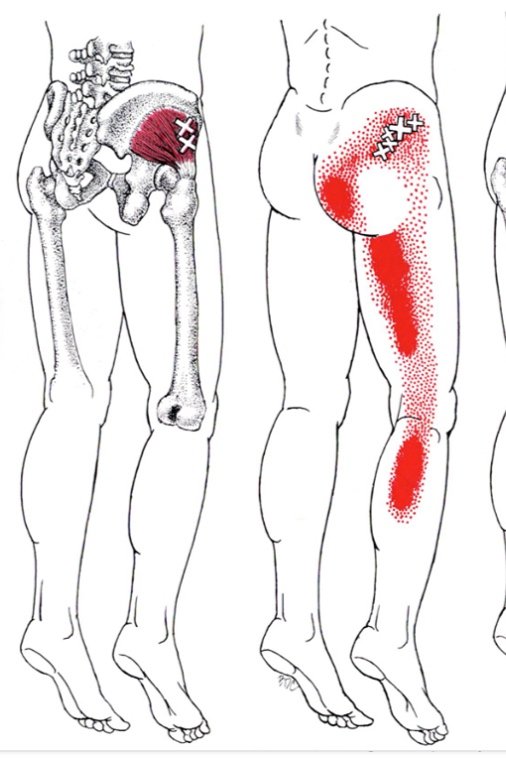BACK PAIN and TRIGGER POINTS
BACK PAIN SACROILIAC JOINT PAIN AND SCIATICA
Let’s look at the statistics of Lower Back Pain and its prevalence in the United States.
1. Prevalence: Low back pain and Sciatica (which is defined as pain in the lower extremity originating from a spinal source) is one of the most common reasons for seeking medical care in the U.S. It affects a large portion of the population at some point in their lives. Studies suggest that around 80% of adults will experience low back pain at some point.
2. Chronic Low Back Pain: While many cases of low back pain are acute and resolve within a few weeks, a substantial number of individuals develop chronic low back pain, which persists for three months or longer. Chronic low back pain can have a significant impact on daily functioning and quality of life. It is estimated that 20-30% of cases of lower back pain will become chronic. Low Back pain recurrence is 90% with most recurrences happening every 18 months. Up to 20-30% will become chronic requiring some type of surgical intervention.
3. Leading Cause of Disability: Low back pain is a leading cause of disability globally, and its impact is also notable in the U.S. It contributes to work absenteeism, decreased work productivity, and increased healthcare utilization.
4. Age Distribution: Low back pain is more common in adults, with the highest prevalence observed in those aged 30 to 60. Initial onset is usually at age 20-25. However, it can affect individuals of all ages.
5. Gender: Studies suggest that women may be slightly more likely to experience low back pain compared to men.
6. Risk Factors: Risk factors for low back pain include factors such as sedentary lifestyles, obesity, smoking, poor posture, physically demanding occupations, and psychological factors like stress and depression.
7. Healthcare Utilization: Low back pain is a common reason for doctor visits, physical therapy appointments, and the use of pain medications. It contributes to a significant portion of healthcare costs.
8. Economic Impact: The economic burden of low back pain is substantial due to healthcare costs, lost work productivity, and disability. It is estimated to cost billions of dollars annually in the U.S
Common Lower Back Trigger Points
Quadratus Lumborum
Gluteus Maximus
Gluteus Medius
Gluteus Minimus
Piriformis
These trigger points can cause pain in the lower back, sacroiliac joint and down the leg in the case of sciatica. If you feel your symptoms may be trigger point related, schedule a free consult with a Physical Therapist at Lanier Therapy in Motion for an evaluation and discussion of treatment options.






